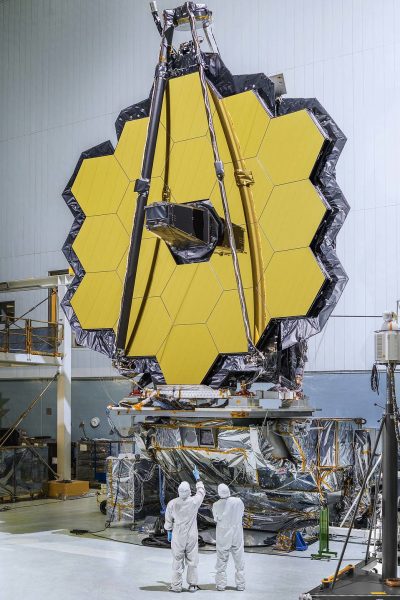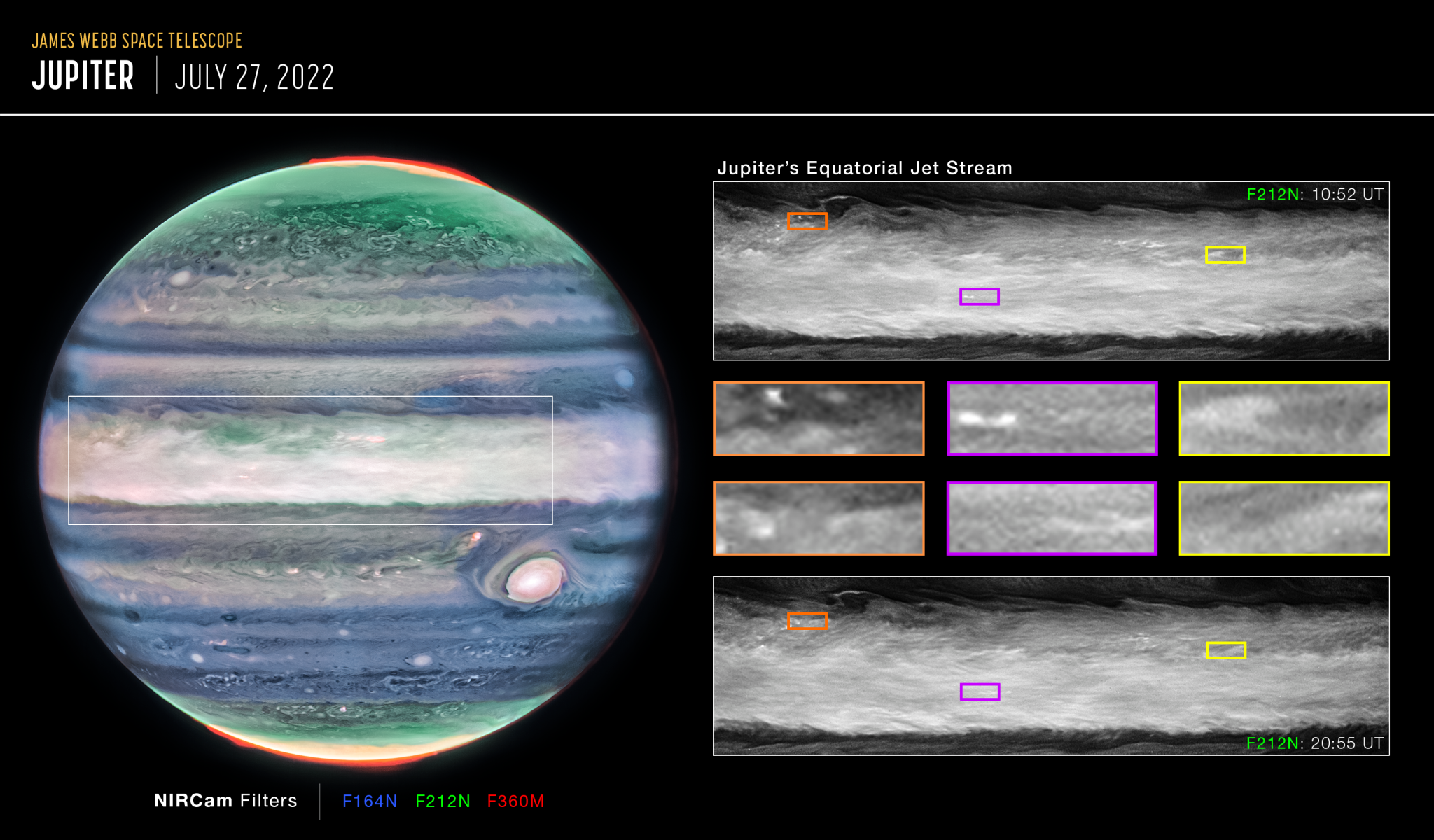
Researchers from the University of California, Berkeley, along with the Observatory of Paris, had recently analyzed data captured from the Webb’s (NIRCam) Near-Infrared- Camera in July 2022 and came across a profound visual of a jet stream on Jupiter’s atmosphere. The research team, Early Release Science Program, inspected and picked apart images of Jupiter 10 hours apart and in four different filters to be able to determine the details present on Jupiter’s atmosphere and surface.

NASA’s James Webb Space Telescope was chiefly designed and programmed to distinguish the weather patterns, rings, satellites, and atmospheres on the well-known gas giant. According to the research team led by Imke de Pater, the NIRCam ( Near-Infrared Camera) allowed them to locate various wind shears and areas where the wind speed had changed with height or distance, which resulted in the team being able to pinpoint the high-speed jet stream( NASA’s). The jet stream was located around Jupiter’s equatorial zone and the newly printed images had shown there to be areas that were disturbed and affected by the motion of the jet stream.
With previous photographs of Jupiter’s atmosphere performed by alternate telescopes appearing hazy and filmy, the James Webb Space Telescope had proven to show clearer and more advanced imaging of the higher-altitude layers of Jupiter’s atmosphere and cloud tops. Indicated by the Early Release Science Program research team , the jet stream discovered on Jupiter was shown to travel at around 320 miles per hour and was compared to as having twice the speeds of a Category 5 hurricane on Earth. Having these data points can allow for further evaluation of the habitability of a planet such as Jupiter. These newly produced findings and discoveries materialized and allowed the researchers to measure how fast the winds change with altitude on Jupiter
The James Webb Space Discovery Telescope is an example of a major advancement in the field of technology and engineering, providing immense benefits to the further study of our understanding of planets and time. The improved quality and design of the telescope can help scientists and researchers develop a deeper interpretation of the cosmos, life support on different planets, and what lies beyond our known galaxy. The included NIRCam will also provide a deeper understanding of the wavelengths and specific areas of interest of significance within the produced photographs. Such as the recent findings on Jupiter can allow scientists to determine the potential living conditions on the planet and whether it is proven to be habitable for humans. The James Webb Telescope is currently the leading and most powerful telescope of the present day, which will continue to serve an an inspiration for future developing research.



